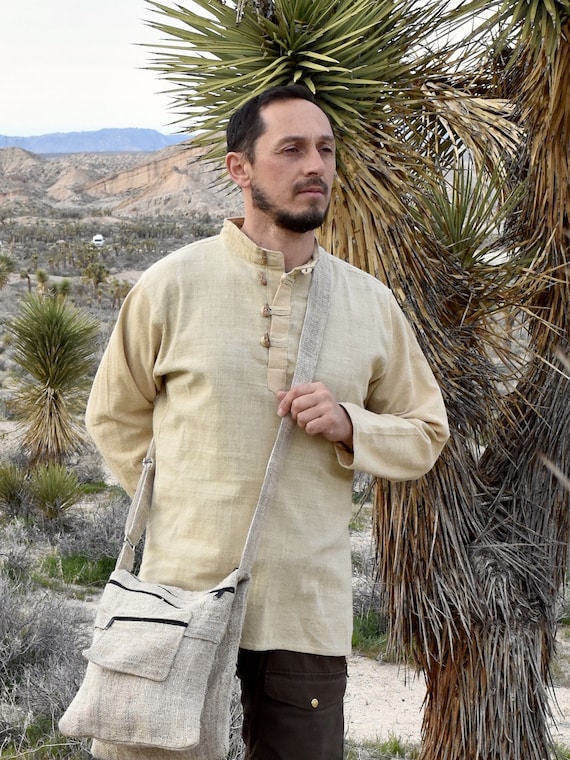Free Advice For Selecting Hemp Clothing
Wiki Article
Why Is Hemp So Much Stronger, More Biodegradable And More Regenerative Than Cotton?
Hemp's natural properties in addition to the way it's grown is what makes it more biodegradable, durable and sustainable than cotton. Here's why- Biodegradability-
Natural Fiber Natural Fiber Hemp is an organic plant fibre that is biodegradable. Textiles and clothing made of hemp are broken down with time. The waste is then returned to the earth, without lasting negative effects. This contrasts with synthetic fibres like polyamide that can break down over hundreds of decades.
Insufficient synthetic additives- Hemp textiles generally don't contain synthetic additives or chemical treatments that can hinder biodegradability. In contrast, some cotton textiles can be treated with synthetic chemicals, like certain finishes or dyes, which could delay the biodegradation process.
Durability-
Hemp fibers can be characterized by their durability and strength. Hemp textiles and clothing are more resistant to wear than cotton, which makes them last longer. Hemp clothes are tough and washable more often before showing signs of wear.
Hemp fabrics are less prone to pilling which results in the development of tiny, fuzzy balls on the fabric surface. This characteristic is a major factor in their longevity as well as overall quality.
Regenerative Agriculture-
Soil Quality- Hemp is a regenerative plant when it is grown in a sustainable manner. Hemp is able to improve the quality of soil by improving the soil's health. The roots deep of hemp help prevent erosion of the soil. This aspect of regenerative will leave the soil in better condition for future crops.
Low environmental impact Sustainable hemp farming methods make use of fewer herbicides and pesticides that reduce the damage to the environment. Cotton farming is a traditional method that could result in soil degradation and water pollution as well as other environmental problems due chemical use in synthetic forms.
Water Efficiency-
Low Water Requirements Hemp typically needs less water than cotton for growth. Its drought-resistant nature means it can thrive with minimal irrigation or in rain-fed environments. It is a water-efficient option in particular for areas that have limited resources.
Hemp can easily be incorporated in crop rotations to improve the health of soil. It may also lower the likelihood of accumulating disease and soil depletion. In cotton farming, the practice of rotation is less widespread.
Hemp's versatility allows it to be used in many different applications like clothing, textiles, paper and building materials. Hemp's versatility permits it to be used in a wide range of industries, with the use of sustainable and regenerative methods.
It's important that you know that hemp is a great product, however it could also be unsustainable, depending on your farming and processing practices. Choosing hemp products that are produced using eco-friendly and ethical practices can maximize its environmental advantages. Similarly, selecting organic cotton can help alleviate the environmental issues related to conventional cotton production. Follow the best read more here for hemp clothes for website info including hemp fabric, dash hemp clothing, hemp textiles, patagonia work pants hemp, hemp button down shirt, 100 hemp t shirt, hemp fabric by the yard, hemp hoodie, hemp bathing suit, hemp jeans and more.

What's The Secret To Hemp's Moisture-Wicking, Thermoregulating And Breathable Characteristics?
Hemp fibers have breathable thermoregulatory, and moisture-wicking properties due to their unique structural and chemical characteristics. These properties are due to the following aspects. Microstructure- Hemp fibres have a hollow, porous structure which lets air circulate through the fibers. Hemp textiles are highly breathable because of their porosity. This structure, when weaved or knitted, permits air to flow, promoting cooling, while also preventing heat and humidity from accumulating on the body.
Hemp fibers are able to absorb water and wick away moisture. The hemp fibers absorb moisture, sweat, and help to prevent feeling like your skin is damp. Furthermore, hemp fibers can be effective in wicking away moisture, spreading it over a larger area of fabric so that it is able to evaporate more quickly. When you are exercising or in hot temperatures, this moisture-wicking ability keeps you dry and comfortable.
Hemp fibers are naturally inherently insulating. In cold weather they are able to trap heat near the body and provide warmth. When it is hot, they let heat and moisture to escape. This helps to cool the body. The thermoregulating capability inherent in hemp makes it suitable for clothing that is used in a variety of temperatures and situations.
Hemp fibers possess natural antimicrobial qualities that are able in preventing the growth and spread of odor-causing bacteria. This characteristic helps to keep hemp clothing fresh and free of odors, even after periods of intense physical exertion.
Hemp clothes are durable and long-lasting. It is able to be washed and worn over and over without loosing its breathability or moisture-wicking abilities. This prolongs the life of hemp clothing, decreasing their need to be replaced and reducing the environmental impact.
UV Protection- Hemp fibers provide a amount of organic UV protection, protecting the skin from damaging ultraviolet radiation. This UV blocker's ability enhances the versatility of hemp clothing and makes it suitable for outdoor activities.
It's important to note that these qualities are inherent in hemp fibers and are not dependent on chemical treatment or additives. Hemp is a natural fibre with numerous characteristics that make it comfortable and sustainable for clothes. This is particularly the case for activewear, outdoor wear and warm-weather clothes. These characteristics are also maintained when hemp fibers become textiles. They are the most sought-after materials for eco-friendly clothing. See the top rated hemp clothes for site recommendations including hemp yoga clothes, patagonia hemp work pants, hemp textiles, hemp sweater, hemp tank top, hemp active wear, hemp clothing womens, afends jesse dress, hemp apparel, hemp t shirts wholesale and more.

What Are The Benefits Of Bamboo Clothing In Terms Of Environmental And Comfort?
Bamboo clothing has many benefits for both the comfort of the wearer as well as the environment in which they live.
Bamboo fabric is renowned for its softness. It's smooth and soft to the feel. Bamboo clothing can be extremely smooth, which is the reason it's a popular option for intimate apparel.
Bamboo fibers are known for their ability to draw moisture away and they are breathable. Air circulates through the micro-gaps and keep you cool even in hot temperatures. Moisture wicking aids in drawing sweat off your skin.
Bamboo clothing has excellent thermoregulatory characteristics. It can keep you warmer in colder temperatures by retaining heat close to the skin. In warmer weather, it helps you stay cool by allowing moisture and heat to evaporate. The ability to adapt to different temperature can make bamboo clothing suitable to wear throughout the year.
Hypoallergenic Bamboo is hypoallergenic in nature, and it is gentle on sensitive skin. Bamboo fabric is more likely than other fabrics to cause allergic reactions or irritation, therefore it's an ideal choice for people with sensitive skin or allergies.
Bamboo fibers are naturally antimicrobial, and can inhibit the growth of bacteria that produce smell. Bamboo clothing retains its freshness, even while being physically active.
Environment-
Bamboo is a sustainable resource that's highly renewable and sustainable. Bamboo is one of the fastest-growing species on the planet. It requires very little water and doesn't require herbicides or pesticides in order to grow. Bamboo is harvested and not killed it as its roots regenerate.
Bamboo is water-efficient and has a low consumption. Bamboo can withstand the rigors of a small amount of water, and it can also grow without rainwater.
Biodegradability- Bamboo clothes are biodegradable which means it degrades naturally as it is disposed. This reduces the amount of non-biodegradable textiles dumped in landfills.
Carbon Sequestration. Bamboo is a great plant to capture CO2 in its rapid growth. Bamboo cultivation is an absorber of carbon dioxide which reduces levels of greenhouse gases and helping to slow the effects of climate change.
Chemical Reduction. Bamboo fabric production typically involves less chemical treatment and processing than other fabrics. This means that the textile industry has smaller environmental footprint.
Closed-Loop Systems- Bamboo fabric production uses closed-loop techniques that recycle water and chemicals. This helps reduce pollution and waste.
It's important to note that the impact on the environment of bamboo clothes can differ depending on the specific manufacturing process used and whether the bamboo used is made from sustainable and sustainably managed bamboo forests. Bamboo clothing produced according to eco-friendly practices will provide the greatest environmental benefit. Have a look at the top rated bamboo clothing recommendations for more recommendations including bamboo sports clothing, checkered bamboo pajamas, bamboo pants mens, bamboo clothing sustainable, preemie bamboo pajamas, bamboo fibre clothing, mens boxer shorts bamboo, bamboo brand jeans, bamboo sweatshirt, bamboo sun hoody and more.
